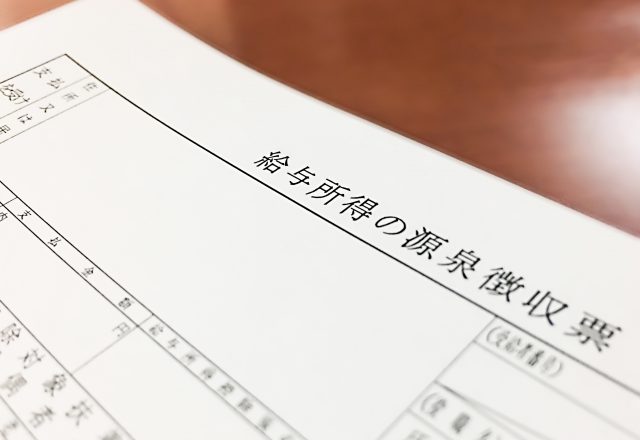Contents
01. Procedures for Entering and Leaving the Company

Necessary procedures when employees enter or leave the company
Various procedures need to be completed when an employee enters or leaves a company. Since each company has its own rules for internal procedures, such as the availability of loaned items and written oaths, we will mainly discuss procedures to be completed outside the company here.
External procedures for entering and leaving a company are as follows:
・Social insurance procedures
・Labor insurance procedures
・Resident tax procedures
・Declaration of exemption for dependents, etc.
Social insurance and labor insurance
Regular employees are basically required to join social and labor insurance and even non-regular employees are required to join social and labor insurance if they meet certain criteria.
Some companies may be enrolled in industry-specific health insurance unions instead of the general Japan Health Insurance, but it is necessary to register for health insurance and employee pension as social insurance.
This involves submitting a completed form to the health insurance association or pension office, along with your national identification number, pension book, and other necessary information.
After submitting this information, a health insurance card will be sent to you which you will, in turn, give to the new employee.
The social insurance will be included in the salary calculation for the month of enrollment and will be added to the payment of social insurance premiums for the following month.
Labor insurance consists of worker’s compensation insurance and employment insurance, and it is necessary to submit documents to the Labor Standards Inspection Office and Hello Work, respectively. After submitting the documents, you will be sent an employment insurance card, which you will, in turn, give to the new employee. This payment is due once a year and is to be declared and paid by July 10th. Employment insurance is deducted every month and settled at the time of payment.
Workers’ compensation insurance is paid not by the employee but is paid in full by the company.
If a company fails to follow the procedures for social insurance and labor insurance, it will have a direct impact on the lives of the employees, such as the employees not having health insurance cards, errors in pension calculations, and not being able to receive insurance for accidents during work. If the company does not follow the procedures without any oversights, it may result in the loss of trust from your treasured employees. When an employee leaves the company, the insurance relationship is terminated by submitting a notice of loss of eligibility for each one.
Residential tax

Residential tax has a special collection system for companies; it is deducted from the employee’s monthly salary and paid in the following month.
The period is from June to May of the following year, and the employee pays residential tax for the previous year.
When an employee enters a new company after changing jobs, the employee may choose to carry over the deduction of the residential tax from the previous company. In this case, it is necessary to submit a residential tax special collection change notification to the local government.
On the other hand, when an employee resigns, the resigning employee is asked to choose from the following and notify the local government of their choice in the form of a notification of change.
・Have the rest of the tax deducted in one lump sum at the time of leaving the company.
・Pay the tax individually (ordinary collection).
・Carry the deduction over to the next workplace.
This will eliminate the need for the company to deduct the tax from the next month.
Income tax

In addition to the above-mentioned social insurance, employment insurance, and residential tax, income tax is also deducted (withheld) from the employee’s monthly salary. However, no special documentation is required for income tax withholding.
Deductions are calculated based on the withholding tax table.
However, it is necessary to ask the employee to submit a declaration of exemption for dependents and others as a basis for calculating the amount on the withholding tax table. The company is required to keep the submitted form.
02. Year-end Tax Adjustment

What is the year-end tax adjustment?
The year-end adjustment can be a task for accounting or human resources, depending on the company. However, in many cases, it is considered to be an HR task because it is applied to the salary paid in December (or the salary paid in January of the following year) and because it is calculated using the salary information for the whole year.
Even among companies that outsource their year-end adjustment, sometimes they outsource it to an accounting firm and sometimes to a laborer’s office.
In precise terms, the year-end adjustment is the process of calculating each employee’s income tax for the year. So, it is considered more of an accounting firm’s domain.
In the monthly payroll calculation, human resources calculate the amount of salary payment by deducting social insurance, income tax, residential tax, and other expenses from the paycheck. However, the total amount of income tax deducted does not necessarily match the tax calculation of each employee for the year. Therefore, work involving adjusting the income tax collected throughout the year and the final income tax calculated is called the year-end adjustment.
Taxes that are calculated to match for the entire year are withheld every month. However, if there are any changes in the amount of bonuses or dependents during the year, as well as expenses such as life insurance, or furusato nozei purchases, there will be a discrepancy in the amount of withholding income tax calculated monthly.
In many cases, this results in a tax refund, but in some cases, the employee may have to pay additional taxes if they receive a large bonus or if their dependents decrease.
The company applies the calculation result of the year-end adjustment in the salary payment, just like the monthly salary calculation, so that the employees do not have to apply for tax payment or refund by themselves.
In cases where the employee is entitled to a tax refund, the company will pay the difference to the employee and deduct it from subsequent withholding tax payments to adjust the amount due to the tax office.
Conversely, if the employee needs to pay additional tax, the company will collect more than usual from the employee and add it to the next month’s withholding tax payment.

Procedures after year-end adjustments
After the year-end adjustment, the company will take care of the tax payment and tax refund procedures on behalf of the employees as mentioned above. In addition to this, the company submits a legal record total table to the tax office and a payroll report to the local government.
If necessary, the employee’s personal withholding slip is attached to the legal record total table.
You are required to submit them for every employee to each local government.
Employees are required to include their national ID number on withholding slips and salary payment reports submitted to tax offices and local governments (ward offices, city halls, etc.).
If the employee refuses to submit his or her national ID number, you must give an explanation to that effect.
The local government in which each employee resides uses the salary payment report submitted by the company to identify the employee’s income and calculate the residential tax. Afterwards, the amount of residential tax is calculated from June of the following year.
The amount of the residential tax is sent to the company around May and will be deducted from the salary paid in June.
Meanwhile, the tax office will not conduct additional tax procedures against a particular individual upon receipt of the legal record total table or withholding slip.
However, in cases where you have submitted your withholding tax certificate but are still required to file a tax return, you may be contacted to confirm this so that it can be ascertained that your tax return has not been filed.
In addition, companies that are applying for work visas are required to submit a copy of the legal record total table when the work visa is issued or renewed, so it is necessary to keep a stamped copy of the submitted legal record total table.
The Shared Administrative Department is based out of an accounting firm, so we specialize in tax calculations. We also have a proven track record in assisting many clients with their year-end adjustments so we can assist you with year-end adjustments as well.
03. Social Insurance Procedures

Most people are familiar with the term social insurance.
However, while many people are familiar with it, they cannot explain it.
There is not much difference between company employees and company presidents when it comes to knowledge about social insurance.
The term social insurance has a broad meaning and a narrow meaning. The social insurance that we usually have deducted from our salaries refers to the narrow meaning.
Leaving out the explanation on the broad meaning of social insurance, the narrow meaning of social insurance refers to the four types of insurance collectively called social insurance.
The four social insurances are health insurance, nursing care insurance, employee pension insurance, and labor insurance.
Furthermore, labor insurance refers to the combination of employment insurance and worker’s accident compensation insurance.
Social insurance procedures are tedious but important.

When an employee joins a company, it is necessary to enroll in health insurance, employee pension, and employment insurance.
Also, when an employee leaves the company, it is necessary to submit a notice of loss of eligibility for health insurance, employee pension, and employment insurance.
Moreover, when a company moves or changes its name, it is required to submit various different types of change notifications to various governmental agencies.
In addition to these, there is also the submission of the basic calculation report, which must be submitted periodically every year.
As you can see, social insurance procedures are essential for maintaining a company, but they are complicated and time-consuming.
The purpose of social insurance is to ensure the stability of people’s lives.
The social insurance system provides us with peace of mind in our daily lives, as we never know when something will happen.
However, as mentioned above, in reality, the procedures for social insurance are complicated.
We want the president and other employees to concentrate on their core business when running and maintaining the company.
We can help you with these complicated but important social insurance procedures described above.
Our staff members are primarily from accounting firms, so we are confident in the quality of our services. You can rest assured that your company will be in good hands.
04. Payroll Calculation

Payroll calculation does not allow for mistakes.

Salary is the most significant motivation for employees.
Although there is no room for error, it is both necessary and complicated to understand the revisions to social insurance and the income tax system that varies depending on the amount paid.
In addition, there is a slight possibility of information leaking if you ask your employees to do the work in-house.
Moreover, if the employee who is responsible for payroll calculation leaves the company, it is necessary to train a new employee from scratch, which is time-consuming.
Outsourcing payroll operations

Some people think that payroll should be done in-house or outsourced to a licensed social insurance consultant.
When an employee is asked to take care of the payroll, it can be a source of anxiety for them.
The employee is also a human being and could be bothered that someone else is being paid more than them. There is also the pressure of not being allowed to make mistakes.
Outsourcing has advantages such as preventing information leaks and eliminating the need for employees to worry.
Above all, it eliminates the need to deal with areas that require specialization, such as the revision of social insurance premium rates and year-end adjustments for payroll calculations, which have no room for error.









